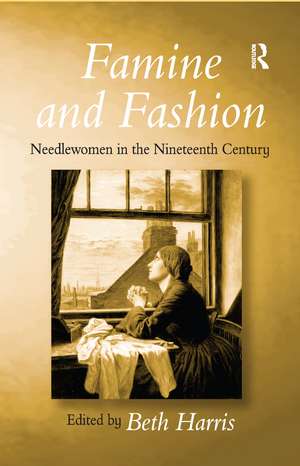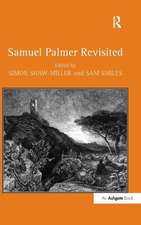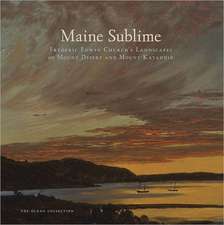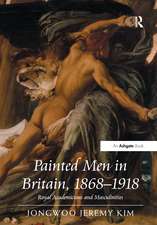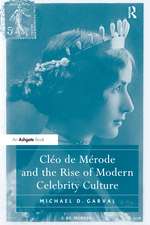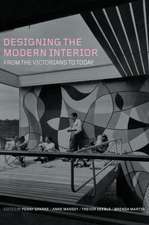Famine and Fashion: Needlewomen in the Nineteenth Century
Editat de Beth Harrisen Limba Engleză Paperback – 11 noi 2016
| Toate formatele și edițiile | Preț | Express |
|---|---|---|
| Paperback (1) | 324.16 lei 6-8 săpt. | |
| Taylor & Francis – 11 noi 2016 | 324.16 lei 6-8 săpt. | |
| Hardback (1) | 736.38 lei 6-8 săpt. | |
| Taylor & Francis – 28 mai 2005 | 736.38 lei 6-8 săpt. |
Preț: 324.16 lei
Preț vechi: 416.92 lei
-22% Nou
Puncte Express: 486
Preț estimativ în valută:
62.04€ • 64.52$ • 51.92£
62.04€ • 64.52$ • 51.92£
Carte tipărită la comandă
Livrare economică 15-29 martie
Preluare comenzi: 021 569.72.76
Specificații
ISBN-13: 9781138256590
ISBN-10: 1138256595
Pagini: 288
Dimensiuni: 152 x 229 x 21 mm
Greutate: 0.45 kg
Ediția:1
Editura: Taylor & Francis
Colecția Routledge
Locul publicării:Oxford, United Kingdom
ISBN-10: 1138256595
Pagini: 288
Dimensiuni: 152 x 229 x 21 mm
Greutate: 0.45 kg
Ediția:1
Editura: Taylor & Francis
Colecția Routledge
Locul publicării:Oxford, United Kingdom
Cuprins
Contents: List of Figures; List of Tables; List of Contributors; Introduction, Beth Harris. Part I Reading Out: 'Weary stitches': Illustrations and paintings for Thomas Hood's 'song of the shirt' and other poems, Susan P. Casteras; Workers' compensation: (needle)work and ideals of femininity in Margaret Oliphant's Kirsteen, Arlene Young; 'Let herself out to do needlework': female agency and the workhouse of gender in Charles Dickens's Little Dorrit, Joellen Masters; The retailoring of Dickens: Christmas Shadows, radicalism and the needlewoman myth, Ian Haywood; Chartism and gender politics in Ernest Jones's The Young Milliner, Ella Dzelzainis; The melodramatic seamstress: interpreting a Victorian penny dreadful, Rohan McWilliam; All that glitters is not gold: the show-shop and the Victorian seamstress, Beth Harris. Part II Writing In: Business or labour? Blurred boundaries in the careers of self-employed needlewomen in Mid-Nineteenth century Albany, Susan Ingalls Lewis; Scarlett's sisters: spinsters, widows, wives, and free-traders in Nineteenth century North Carolina, Pamela J. Nickless; 'Thinking and stitching, stitching and thinking': needlework, American women writers, and professionalism, Jacqueline M. Chambers; 'Furnishing girls with self-supporting trades': custom needlework and vocational education, 1890-1920, Wendy Gamber; Virtue, vice, and revolution: representations of Parisian needlewomen in the Mid-Nineteenth century, Judith DeGroat; 'A heavy bill to settle with humanity': the representation and invisibility of London's principal milliners and dressmakers, Nicola Pullin; 'Wanted: 1000 spirited young milliners': the fund for promoting female emigration, Jo Chimes; 'To be poor and to be honest...is the hardest struggle of all': sweated needlewomen and campaigns for protective legislation, 1840-1914, Sheila Blackburn; Bibliography; Index.
Notă biografică
Beth Harris is Assistant Professor in the History of Art at the Fashion Institute of Technology, New York, USA.
Recenzii
’... visual and ideological appeal which the book charts meticulously and from such a variety of angles, making an important contribution to research not only on labour history, but on 'the critical ideological role played by femininity in nineteenth-century discourses'... The sophisticated arguments of the essays in this volume, the cross-references between them and the wide range of sources consulted and analysed makes this an original and edifying read, particularly useful for postgraduates and scholars, which will certainly stimulate further research into both women's work and the figure of the seamstress in this period.' The Year's Work in Critical and Cultural Theory ’This interesting book is a groundbreaking exploration of women and the occupation of needlework in the 19th century, gathering together scholars from a variety of disciplines and examining needlework from the perspectives of class, gender and sexuality... The book is well edited by Beth Harris, who also contributes to the book, and her clear and thought provoking introduction sets the scene well. The chapters are readable, particularly for those interested in the occupation of needlework, or in feminism and/or Victorian history and literature. As a whole the book is well presented and clear, with themes connected across both sections... This is an appropriate book for anyone interested in feminism, literature, history, the occupation of needlework... Perhaps of most interest to researchers and educators, it will also appeal to interested practitioners.’ Journal of Occupational Science
Descriere
The fifteen articles in this book address the appearance of the nineteenth-century seamstress as a 'real' figure in the changing economies of nineteenth-century Britain, America, and France, and as an important cultural icon in the art and literature of the period. It assembles the work of leading American, British and Canadian scholars from many different fields, including art history, literary criticism, gender studies, labor history, business history, and economic history to draw together recent scholarship on needlewomen from a variety of different disciplines and methodologies. Famine and Fashion will therefore appeal to anyone studying images of work in the nineteenth century, popular and canonical nineteenth-century literature, the history of women's work, the history of sweated labor, the origins of the ready-made clothing industry and early feminism.
